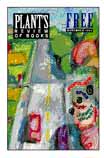

Its imagery is indelible. A handful of young smokejumpers crowd the open door of a C-47 at 1,250 feet and jump into a choking Montana inferno. Within two hours, an unquenchable wall of flame will have roared up after them like a runaway train. They will divest themselves of saws and packs and finally hand tools in order to outrace certainty, sprinting up the sheer grade to the safety of a ridgeline. But, by guile or speed or luck, only five survive; two of those to live only hours in the merciful delirium of terminal shock.
The rapidly unspooling consequences of the 1949 Mann Gulch wildfire, taken up by Norman Maclean while the embers were literally still warm, would interweave the lives and deaths of everyone concerned in a fabric of accusations and regret and incomprehension. Lingering horror, miraculous survival, the hubris of youth and the reflection of experience--these alone would have provided an armature for any number of fictions or morality plays or dramatic reconstructions. But Young Men and Fire frames something different and altogether unexpected--our obsession with how we make meaning.
Readers may be struck with the unusual construction of the account. Like the French experiments with the noveau roman, tissue upon tissue of observation, evidence, and guesswork accrete through repetition for a startling effect. The "meaning" attached to each detail becomes a part of a rhythm instead of solidifying into factual monolith. It's technique which feels eerily comfortable.
Central to the narrative is a contour map of Mann Gulch displaying Maclean's "stations of the cross;" his recurring metaphor describing the events that unfolded for fifteen smokejumpers and a ranger at the lightning-struck fire. He reconstructs the crew's progress in minute detail, returning again and again to the circumstances of their approach to, and subsequent race from, what became an exploding holocaust. Like the statistical distribution of the points on a graph, the exact spot of each deceased firefighter's collapse is scattered along the path of their retreat. For those who died within sight of salvation, the cartography of last thoughts becomes the project of literature. Maclean sets forth succinctly the orientation of this book when he says:
If a storyteller thinks enough of storytelling to regard it as a calling, unlike a historian he cannot turn from the sufferings of his characters. A storyteller, unlike the historian, must follow compassion wherever it leads him. He must be able to accompany his characters, even into smoke and fire, and bear witness to what they though and felt even when they themselves no longer knew.
The "calling" Maclean speaks of is one that transcends well-turned prose or clever artifice--he knows that meaning must be fabricated, not found.
This is not a tale of conventional suspense or withheld discovery. Almost from the first we know the terrible consequences of the fire's sudden surge, and of the spontaneous "invention" by Foreman Wag Dodge that might have saved them all. Maclean is after something else--a reflection of our own mortality in the final moments of the crew. Like a handful of other events--the last moments of the Titanic, for instance, or Custer's stand at Little Big Horn--the moments surrounding the Mann Gulch Fire provide a sealed crucible of causality. All variables can be accounted for, and all contributing details can be mapped out. What remains is for the writer to abstract is the unadorned essence of humanity and, finally, a meaning. Maclean, however, is not about to force conclusions from this material. At the very core of his work lies uncertainty. Almost thirty years after he began his exploration of the event, Maclean thinks to himself: "Maybe you are trying to see something big and important too soon...maybe it would be surer if you tried to work up to it." There can be, in fact, no conclusion.
Maclean's project is not to distribute blame or discriminate between precise causes and effects--like a battalion of infantry marching into the sights of enemy machine guns, the firefighters are propelled at first by a combination of blind obedience and overweening self-confidence, and at last by the innate belief we all share in our invulnerability. Tellingly, Maclean found no evidence of panic amongst those who perished--their last thoughts, we may surmise, were of disbelief.
The author of A River Runs Through It, another proof that crystalline insight into the pursuits of youth may take a lifetime of work, brings a retired academic's fussy preoccupation to bear on almost every detail of the event. As for Melville with Moby Dick, each facet of his investigation prompts discursive interludes that don't seem to fit until the entire narrative has run its course. This becomes clear with the moving personal revelation of the book's very last sentence, for--like all works of literature--Young Men and Fire is ultimately autobiographical. The meaning that Maclean worried from the marrow of each of the dead young men's bones recalls the sentiment that the deaths of millions is merely a statistic while the death of one is truly tragic. The race against death we read about is really his own.
That horrible hour in 1949, when ever-narrowing probabilities extinguished some young lives while sparing others, kindled an obsession that would last the balance of Maclean's lifetime. The fact that his book was given its final form by editors and friends at the University of Chicago Press long after his passing attests to the persistence of his vision. And that the finished artifact reveals some flaws and convolutions vanishes in the face of their collective accomplishment--Maclean's project not only overspilled its author's life, but continues to resist resolution by those who follow him.
Our identities, too, are bound up with the mysteries we presume to engage.
 Return to Facing
Return to Facing